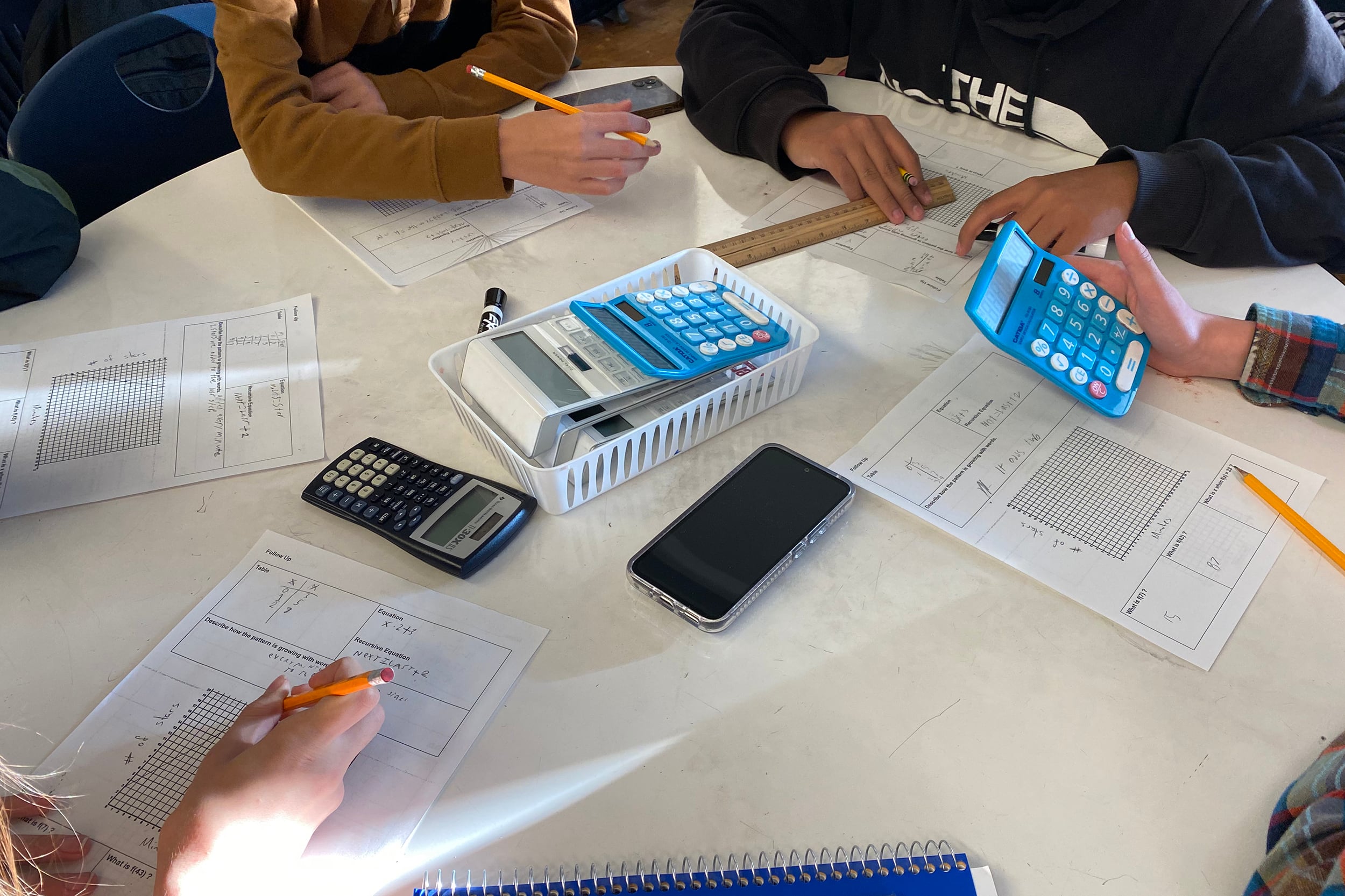If you’re an eighth grader who wants to take algebra, can you even take the class?
The answer to that question, it turns out, depends a lot on two things: how your school identifies students for advanced math, and where you live.
According to a new nationally representative survey released Tuesday, 65% of U.S. principals said their elementary or middle school offered algebra in eighth grade, but only to certain students. Meanwhile, just 20% of principals said their school offered the class in eighth grade and that any student could take it.
But that picture differed by state. In California, nearly half of principals said their school offered algebra only to certain eighth graders. But in Florida, more than 80% of principals said the class was restricted. In both states, 18% of principals said any eighth grader could take the class, similar to the national rate.
The findings, based on surveys conducted last spring by the RAND Corporation, shed light on the uneven access students have to advanced math classes in middle school, which can have lasting effects on their higher education and job prospects.
Algebra is often considered a gateway class. Eighth graders who take the course can more easily reach calculus by 12th grade — which can set students up for challenging math classes in college and career paths in science and engineering fields.
“The kids that aren’t in algebra by eighth grade, they can do that still,” said Julia Kaufman, a senior policy researcher at RAND, and the lead author of the report, “but they would have to do something special to get there,” such as doubling up on math or taking a summer class.
The report also details the extent to which students are separated based on their perceived math abilities, starting as young as elementary school.
More than 40% of elementary school principals told RAND researchers that their school grouped kids based on their math levels, mostly within the classroom. But by middle school, nearly 70% of principals said they grouped students in math. Most commonly, students were put into separate math classes on honors or career prep tracks, the report found.
“The amount of achievement-level grouping — that it does start within classrooms in K-5 schools and that by middle school, students are typically grouped by achievement level more often than they’re not in their math classes — that’s something new,” Kaufman said.
The findings come as parents and school leaders across the country engage in fierce debates over whether students should be able to take algebra before high school, and if so, what support students need to do well in the class.
Notably, San Francisco Unified schools, which attracted national attention for a policy that prevented students from taking algebra until ninth grade, are poised to bring algebra back to middle schools following parent pushback. School officials there put the policy in place 10 years ago to help prepare more Black and Latino students and students from low-income families to pass algebra and access higher-level math classes — a goal that hasn’t panned out.
The new survey data doesn’t look at whether tracking helps or hurts students’ math outcomes.
And there are other factors that could affect whether students can access higher-level math classes, the report notes, such as differing teacher certification rules, school funding levels, and state policies. California’s state math guidelines encourage students to take algebra in ninth grade, for example, while New York schools are supposed to offer high school math to eighth graders who want to take it.
But Kaufman says the report does suggest that schools should be looking at the criteria they use to group students in math, and whether it could be fueling racial or socioeconomic disparities.
“We’re not giving a recommendation that nobody should be tracked,” Kaufman said. “But if you are grouping students, I think this report calls for you to consider whether the way students are grouped, and how, is biased. Are a lot of students of color, for example, in the lower track? What’s happening there?”
Schools try various methods to expand algebra access
Nationally, white and Asian American students are more likely than their Black and Hispanic classmates to enroll in and pass algebra in eighth grade, the latest federal data shows. Historically, students from low-income families have had less access to algebra in eighth grade, too.
In Philadelphia, many students are blocked from the city’s most selective high school because their middle schools don’t offer algebra. Making algebra more accessible is part of the superintendent’s curriculum overhaul.
School districts like Chicago have taken steps to expand access to algebra in eighth grade, such as offering the class online and covering costs for educators to get algebra teaching credentials. Historically, fewer students in the city’s predominantly Black and low-income neighborhoods have been able to take the class before high school.
The RAND survey found that principals of more-affluent schools were much more likely than leaders of higher-poverty schools to say they considered parent or guardian requests to place students into advanced math classes. That could shortchange kids who don’t have a parent who can step in and do that kind of advocacy, Kaufman noted.
The report urges schools to look at multiple data points to place students into higher-level math classes, and to consider experimenting with the cutoff scores used to identify which students can handle the harder math coursework.
In Oklahoma, Union Public Schools is trying that, The Hechinger Report recently reported. The district, which serves parts of Tulsa and the city’s southeast suburbs, used to offer a pre-algebra placement test in fifth grade, just one time.
But after school officials realized that was mostly funneling kids from elementary schools in whiter and wealthier neighborhoods into the advanced middle and high school math classes, they made changes. The district now allows students to take the fifth-grade placement test multiple times, and teachers can recommend promising students regardless of their score. That’s helped diversify advanced math classes, particularly for Hispanic students.
Union Public Schools also added math tutoring starting in third grade — the kind of support that the RAND report says can be crucial for student success, but that many struggling students aren’t getting.
More than three-quarters of middle school principals told the RAND researchers that less than half of their struggling students participated in math support options offered by their school, such as tutoring, double-dose math classes, or a summer math program for rising middle schoolers.
That could point to the need for schools to universally screen kids for extra math help, or do more to make sure students and parents know about what help is offered. Schools may also need to change how the help is offered, such as moving after-school tutoring to during the school day or providing transportation so more kids can attend.
Those are crucial steps, Kaufman said, at a time when many kids are struggling to close math gaps that cropped up when school was remote or disrupted in other ways by the pandemic.
“I know tutoring is happening in a lot of places, it’s one of the priorities of the White House right now,” she said. But if tutoring is mostly offered to kids and parents who volunteer, “then the tutoring is not going to reach the kids who need it the most.”
Kalyn Belsha is a senior national education reporter based in Chicago. Contact her at kbelsha@chalkbeat.org.





